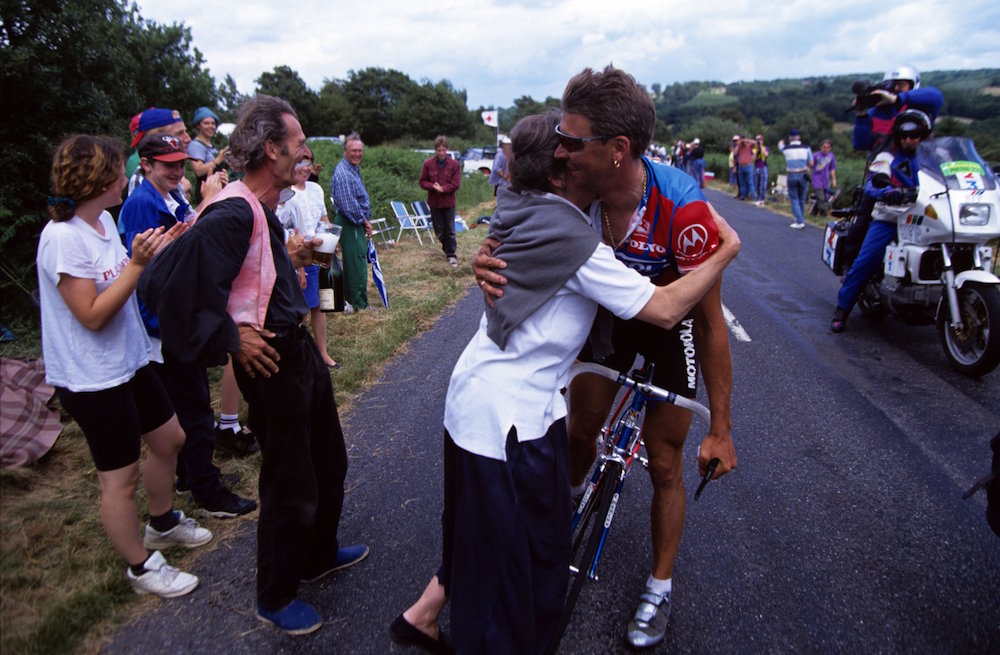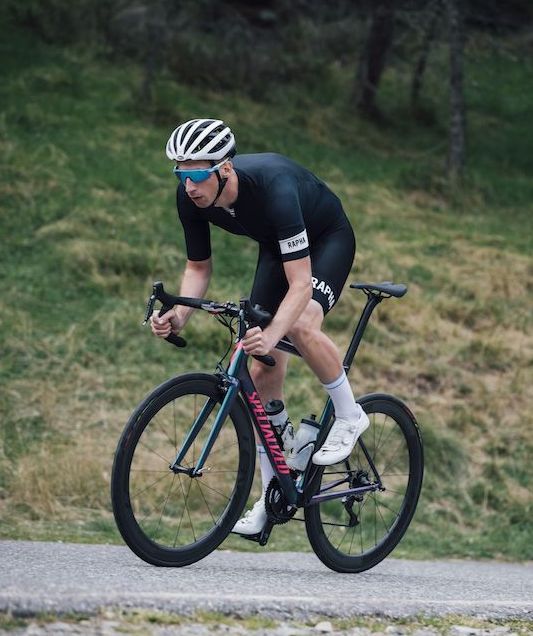Moment in time: Sean Yates's day in yellow at the Tour de France
Sean Yates became just the third Briton to top the Tour de France general classification 1994, but as he recalls nearly a quarter-of-a-century on, he so very nearly didn’t get the chance to wear the yellow jersey


Bereft of team radios, communication inside the peloton before the turn of the millennium was much harder. So difficult that it almost cost Sean Yates the chance of wearing the yellow jersey at the Tour de France.
In his 11th Tour, and at the age of 34, Yates had enjoyed a memorable start to the 1994 edition. He had watched his compatriot Chris Boardman win the opening prologue, becoming only the second Briton to wear the maillot jaune, and then spent two days riding in England, including on his home roads of Sussex. It was, in a myriad of ways, a glorious week for Yates.
>>> Moment in time: Johan Vansummeren’s shock win at Paris-Roubaix
The Motorola rider, who had won a time trial stage of the race in 1988, didn’t foresee it getting even better, though. At the beginning of stage six, a mammoth 270km journey from Cherbourg to Rennes, Italian Flavio Vanzella was the rider decked in yellow, holding a four-second advantage to the man he inherited the race lead from, Belgian Johan Museeuw.

The latter, though, had collected six bonus seconds in intermediate sprints during the stage, thus being the virtual race leader by two seconds.
With the day’s break reeled in long before the finish, and sitting 40 seconds shy of Museeuw, Yates helped forge a seven-man group to contest the stage win.
The break of seven quickly built a lead of 55 seconds. “I made the right move with strong riders who were all committed to making it work. It was a long stage and it needed guys with good legs to make the difference,” Yates recalls.
The latest race content, interviews, features, reviews and expert buying guides, direct to your inbox!
It became apparent that Yates was riding for race ownership. “It definitely wasn’t planned,” he says. “It was a case of I felt good in the right place and at the right time.” Yates needed to finish 41 seconds ahead of Museeuw.
The chaser’s efforts were stunted by Lance Armstrong, the then world champion and Yates’ team-mate, who worked tirelessly to give Yates as great a chance as possible at sitting at the top of the general classification.
Gianluca Bortolami then jumped clear with two kilometres remaining, targeting a solo stage victory. Yates didn’t flinch, but he should have; the Italian was just 23 seconds shy of him in the GC classification, with 20 seconds awarded to the stage winner.
“We didn’t have radios. My DS didn’t tell me that Bortolami was close to me, and I didn’t realise, too. I was worried about the guys behind, they were the major danger, especially the gap to Museeuw. But my biggest fear was actually Bortolami.”
Bortolami won the near-seven-hour stage two seconds ahead of his fellow escapees, easing up to celebrate as he crossed the line. Yates rolled home sixth, and immediately sought the attention of the late Paul Sherwen. “I sat there at the finishing line with Paul counting down the seconds to the peloton.

“He also thought that the only chance I wouldn’t get it was if Museeuw finished more than 40 seconds after me. It was only when we got the result I suddenly noticed that I had only taken it by one second from Bortolami. It was gut-wrenching to think we had almost not done it.
“As soon as I knew the group was 45 seconds down, I knew I had the jersey to all intents and purposes. It was a narrow escape, just one second.
“Had Bortolami not sat up to celebrate the win, he might have taken the jersey. In my later years as a DS, that sort of info should have been the first thing the DS told me: ‘don’t let him go, he’s the closest guy to you, 20-plus seconds down, you can’t let him go.' Today the DS is straight on the radio giving the low-down on every scenario. But then it was hit and miss.”
Nevertheless, Yates had become just the third Briton to wear the most coveted jersey in the sport. His reaction at the time is inscribed in the sport’s history pages. Referencing his years as a domestique, he quipped. “It just goes to prove, it’s not over till the fat lady sings.”
Yates’ stint in yellow lasted just 24 hours. On stage seven, Museeuw wanted the jersey back, and just before an intermediate sprint that awarded bonus seconds, his team-mate Ralf Sorensen “got the hump and grabbed my jersey”, preventing Yates from contesting the sprint. He ceded the jersey to the Belgian by six seconds.

The peloton, though, enjoyed their temporary leader. “The yellow had fallen into my lap and it was a great moment in my career. I had always been a worker, and everyone was happy for me as it proved that you didn’t have to be [Migual] Indurain or a mega-sprinter to get the jersey. It was a reward for that hard work and all the suffering I had done throughout the years.”
And what happened to the jersey? “It was framed, but Bradley [Wiggins] wanted to buy it from me so I said yes.” A few months later, in late 2016, Yates had a serious accident in his garden and required surgery. The waiting list on the NHS was two years, because the surgery was non-life threatening.
With the money Wiggins had paid for the yellow jersey, Yates - who now lives in Spain and continues to coach (www.seanyatescoaching.com) - was able to pay for surgery in a private hospital. “The fact that Bradley had bought the jersey meant it cost me nothing. As it turned out, the money wasn’t blown on a car, but it was used to make my life a lot better than it would have been. It’s a twist in the tale of the history of my yellow jersey.”
Follow on Twitter: @richwindy
Richard is digital editor of Cycling Weekly. Joining the team in 2013, Richard became editor of the website in 2014 and coordinates site content and strategy, leading the news team in coverage of the world's biggest races and working with the tech editor to deliver comprehensive buying guides, reviews, and the latest product news.
An occasional racer, Richard spends most of his time preparing for long-distance touring rides these days, or getting out to the Surrey Hills on the weekend on his Specialized Tarmac SL6 (with an obligatory pub stop of course).
